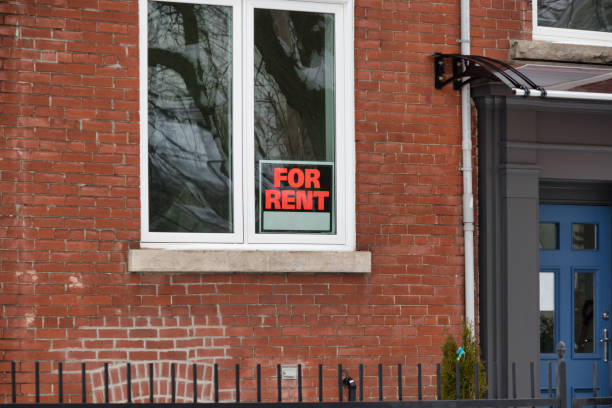Renting your first apartment in Canada is an exciting milestone. It represents independence, growth, and the beginning of creating a space that feels like home. But the rental process can also feel overwhelming, especially with rising rents and different rules across provinces. The good news is that with the right knowledge and preparation, you can confidently navigate this process and secure a place that fits your budget and lifestyle.
This guide walks you step-by-step through renting your first apartment in Canada. We will cover everything from how to budget, what landlords look for in an application, your rights as a tenant, and what common lease terms mean. Whether you are a student, a young professional, or simply moving out on your own for the first time, this article will equip you with the tools you need.
Understanding the Canadian Rental Market
Canada’s rental market is a tale of two realities. In major cities like Toronto, Vancouver, and Montreal, you’re competing with thousands of other renters for limited housing stock. Meanwhile, smaller towns and cities offer more breathing room but fewer options overall.
The Big City Challenge
In 2024, new tenants across Canada faced significant rent hikes, with rents for units that turned over rising by 23.5%. Toronto saw some of the steepest increases, with turnover rent growth reaching up to 40.7%. This means when a tenant moves out and a new one moves in, landlords are hiking rents by nearly a quarter on average.
The average asking rent for two-bedroom purpose-built apartments reached $2,294 according to recent research from Rentals.ca and Urbanation. But these numbers vary drastically by location.
Market Dynamics You Need to Know
Average rent growth reached a record high at 8% and outpaced wage growth, making it less affordable for renters, especially those with lower incomes. This means your buying power as a renter has actually decreased over the past year.
The rental market also follows seasonal patterns. Summer months (May through August) are the most competitive, especially in university towns where students are hunting for September leases. If you can apartment hunt during winter months, you’ll face less competition and potentially find better deals.
Supply and Demand Reality
The shortage of available rental units combined with growing demand from newcomers, students, and people unable to afford home ownership has created a perfect storm. Some cities report vacancy rates below 2%, which economists consider a crisis level.

Step 1: Determine Your Budget
Before you start searching, you need a clear idea of how much rent you can afford. In Canada, the general recommendation is that rent should not exceed 30% of your gross monthly income. However, in expensive markets like Toronto or Vancouver, many renters spend closer to 40 or even 50 percent of their income on housing.
As of mid-2025, the average rent for a one-bedroom apartment in Canada is about $1,930, according to Rentals.ca. But this average hides big differences. In Toronto and Vancouver, one-bedrooms often cost between $2,400 and $2,800, while in smaller cities like Winnipeg or Laval, rents can fall below $1,600.
When setting your budget, do not just think about rent. Factor in utilities (electricity, heating, water, internet), which may or may not be included. Also consider renter’s insurance, which is often required by landlords and costs about $20 to $30 per month.
Be realistic about what you can afford, but also consider the total cost of living. A cheaper apartment in a location requiring a car might cost more overall than expensive rent in a walkable neighborhood.
Step 2: Know Your Tenant Rights in Canada
Canada doesn’t have national tenant protectionlaws; each province sets its own rules. This means your rights in British Columbia differ significantly from those in Alberta or Ontario. Understanding these differences is crucial, especially if you’re moving between provinces.
Key Rights That Vary by Province
Rent Control: As of 2024, landlords in several provinces cannot raise rent by more than 5% annually, though this varies significantly by location. Ontario has strict rent control on most units built before 2018. British Columbia has annual rent increase limits. Alberta has no rent control at all.
Privacy Rights: Across Canada, landlords must give notice before entering your apartment, typically 24 hours for routine inspections. But the specific rules about when and how they can enter vary by province.
Eviction Protection: Landlords can’t physically remove tenants or lock them out of their rental units. They must follow legal eviction procedures, which differ significantly between provinces. Ontario’s process is particularly tenant-friendly, while Alberta’s favors landlords more.
Provincial Differences You Should Know
Ontario: Strong tenant protections, rent control on older buildings, extensive dispute resolution through the Landlord and Tenant Board.
British Columbia: Rent increase limits, security deposit restrictions, mandatory condition inspection reports.
Alberta: Minimal rent control, faster eviction processes, security deposits up to one month’s rent allowed.
Quebec: Unique lease transfer rules, strong tenant rights, specialized rental board system.
Before signing any lease, research your specific provincial tenant rights. Each province has government websites explaining tenant protections in detail.
Step 3: Prepare Your Rental Application
During the rental application process, a landlord can ask for several different documents, including proof of income, letters of reference, and a credit report. Being prepared with these documents gives you a significant advantage in competitive markets.
Standard Documents Landlords Request
Proof of Income
- Recent pay stubs (last 2-3 months)
- Employment letter stating position, salary, and employment status
- T4 or Notice of Assessment for self-employed individuals
- Bank statements showing regular deposits
Credit Report
Landlords typically request credit reports from Equifax or TransUnion. In Canada, you can get free credit reports from both agencies, though many landlords prefer paid versions that include credit scores.
References
- Previous landlords (with contact information and rental period)
- Employer reference
- Personal references who can vouch for your character
- Banking references if you have a long-standing relationship with your bank
Identification
- Valid government-issued photo ID
- Social Insurance Number (for credit checks)
- Immigration documents, if applicable
Special Considerations for Newcomers
If you’re new to Canada, you may not be able to provide traditional documentation, and a landlord might be reluctant to rent to you. But there are workarounds:
Building Canadian Credit: Additional documents can demonstrate your financial reliability, including proof of income or job offer, recent bank statements showing savings, and valid identification and immigration documents.
Alternative Documentation
- International credit reports (though not all landlords accept these)
- Bank reference letters from your home country
- Proof of substantial savings or investments
- Job offer letter or employment contract
- Immigration documents showing your status in Canada
Overcoming the No-Credit-History Challenge
- Offer to pay several months’ rent upfront
- Provide a larger security deposit where legally allowed
- Find a Canadian co-signer with good credit
- Look for landlords experienced with newcomers
- Consider using newcomer-specific rental services
Step 4: Understand Lease Agreements
Canadian lease agreements contain specific terms that might differ from what you’re used to, especially if you’re coming from another country or province.
Common Lease Types
12-Month Fixed Lease: Most common for new tenants. Provides stability for both tenant and landlord. Breaking this lease early can result in penalties.
Month-to-Month: Offers flexibility but less security. Landlords can end these leases with proper notice (usually 30-60 days depending on the province).
Fixed-Term with Automatic Renewal: Common in some provinces. At the end of the fixed term, the lease automatically becomes month-to-month unless you or the landlord give notice.

Important Lease Terms to Understand
Subletting and Assignment: These terms aren’t interchangeable. Subletting means you remain responsible for the lease while someone else lives there temporarily. Assignment transfers your lease obligations to someone else entirely.
Renewal Rules: Some leases automatically renew; others require active renewal. Understand your province’s rules about lease renewals and rent increases.
Maintenance Responsibilities: Clarify who’s responsible for what. Generally, landlords handle major repairs and structural issues, while tenants handle minor maintenance and damage they cause.
Watch Out for Illegal Clauses
Some lease clauses that seem reasonable are actually illegal in many provinces:
- “No guests allowed” policies
- Blanket “no pets” clauses (many provinces allow pet restrictions but not complete bans)
- Requirements to use specific service providers
- Clauses requiring you to pay for normal wear and tear
- Automatic rent increases above legal limits
If you spot questionable clauses, research your provincial tenant laws before signing.
Step 5:Search for Apartments
There are many ways to find available rentals in Canada, and the best approach is to use multiple sources at once. Popular websites like Rentals.ca, Kijiji, Zumper, and Craigslist list thousands of apartments across the country. In larger cities, Facebook Marketplace and community housing groups are also useful tools.
Beyond the internet, traditional methods still work well. Walking through neighborhoods and looking for “For Rent” signs can uncover hidden gems, especially in smaller towns. University housing offices, which often post listings that are open to non-students, can also be valuable resources. Community bulletin boards, local newspapers and classified ads, and even word of mouth through friends or coworkers may lead you to opportunities you would not find online.
As you browse, pay close attention to listing details. Check if utilities are included, what the move-in date is, whether pets are allowed, and the length of the lease. In high-demand markets like Toronto, Vancouver, and Montreal, desirable units often receive dozens of applications within days, so being ready to act quickly gives you an edge.
Red Flags and Scam Prevention
When searching for rentals, it’s important to stay alert. Rental scams are unfortunately common, and recognizing the signs early can save you stress and money.
Definite Scams Include
- Being asked to send money before you’ve even seen the property
- No written lease agreement provided
- Rental prices that are far below the typical market rate in the area
- A landlord claiming to be out of the country and offering to mail you the keys
- Requests for payment through wire transfers, gift cards, or other untraceable methods
Warning Signs to Watch For
- High pressure to sign a lease immediately, without a proper viewing
- Landlords unwilling to provide references or proof of ownership
- No clear address or official business information
- Listings that simply seem too good to be true
Trust your instincts. If something feels off, it’s better to walk away and continue your search than to risk losing money to a scam.
Step 6: Tour the Apartment
Never skip a viewing before committing. Photos can be misleading, and seeing the unit in person allows you to check details like water pressure, natural light, noise levels, and overall condition.
During Your Visit, Test Everything
- Turn on the taps and shower to check water pressure
- Try the heating and air conditioning systems
- Test all appliances if they’re included
- Flip light switches and test electrical outlets
- Open and close windows and doors to ensure they work properly
- Check cell phone reception throughout the unit
Ask Key Questions Such As
- Which utilities are included in the rent?
- What’s the internet situation like?
- How are garbage and recycling managed?
- Is parking available, and what does it cost?
- What’s the landlord’s policy on repairs and maintenance?
Don’t forget the neighborhood: Walk around at different times of the day to get a feel for noise and safety. Check the distance to public transit, grocery stores, and your workplace or school. Notice any ongoing construction or development that might affect your quality of life. If safety is a concern, look up local crime statistics for extra peace of mind.
Take notes during your tours so you can compare units side by side. Sometimes the “perfect” apartment online looks less appealing in person, while a modest listing may turn out to be a great fit once you see it.
Step 7: Apply and Secure the Apartment
Once you find a place you like, submit your application quickly with all required documents. A complete application stands out to landlords.
If approved, you will be asked to sign the lease and provide your first month’s rent and deposit. Keep copies of all documents and receipts.

Step 8: Signing and Moving In
Once your application is approved, the next step is the lease signing. At this appointment, you’ll review the complete lease agreement, pay your required deposits and first month’s rent, and receive your keys or building access cards. You’ll also need to complete a move-in inspection report and set up any utilities that aren’t already included in your rent.
The Move-In Inspection
Don’t skip this part; it’s your best protection for getting your security deposit back later. Walk through the entire apartment with your landlord or property manager and carefully document:
This step is crucial for protecting your security deposit. Walk through the entire unit with your landlord or property manager, documenting:
- Any existing damage, however minor
- Cleanliness issues
- Missing or broken items
- Functionality of all appliances and systems
Take photos and ensure both you and the landlord sign the inspection report. In some provinces, like British Columbia, this inspection is legally required.
Setting Up Your New Home
Depending on what’s included in your rent, you may need to arrange accounts for electricity, natural gas, or internet and cable. Water bills are less common in apartments, but double-check your lease.
Most landlords in Canada now require proof of renter’s insurance before move-in. This typically costs between $15 and $30 per month and covers both your personal belongings and liability. Shop around, as rates can vary widely by provider.
Finally, don’t forget to update your address. Notify your bank and credit card companies, your employer for payroll, the Canada Revenue Agency, provincial health insurance, voter registration, and any subscription services you use. Taking care of this early saves headaches later.
Bonus Tips for Newcomers and Students
International Students
Many universities offer housing services that extend beyond on-campus residence. They often maintain lists of landlords experienced with international students and may offer guidance on Canadian rental customs.
Student housing versus private rentals each have advantages. University housing typically includes utilities, internet, and furniture but may be more expensive per square foot and have strict rules. Private rentals offer more independence but require you to handle all setup yourself.
Newcomer Programs
Several organizations help newcomers navigate Canadian rentals:
- Some major banks offer newcomer programs that include housing search assistance
- Settlement agencies in most cities provide housing support
- Rental services specifically designed for newcomers exist in major immigration centers
Alternative Housing Options
If traditional rentals aren’t working:
- Consider room rentals in shared houses initially
- Look into extended-stay hotels while you search
- Investigate co-living spaces in major cities
- Check if your employer offers temporary housing assistance
Frequently Asked Questions About Renting in Canada
1.Can landlords ask for a credit check in Canada?
Yes, landlords across Canada can request credit checks as part of the rental application process. They typically ask you to provide this, though some will run the check themselves with your permission. You can get free credit reports from Equifax or TransUnion.
2. Do you need a job to rent an apartment in Canada?
While having stable employment makes renting much easier, it’s not legally required everywhere. Landlords want assurance you can pay rent, which usually means steady income. This can come from employment, government benefits, savings, family support, or other sources. Students often rent without traditional jobs by showing financial support from family or student loans.
3. Can landlords refuse pets in Canada?
In most provinces, landlords can include a “no pets” clause in leases. However, in Ontario, such clauses are void, meaning landlords cannot evict you for having a pet, although there are exceptions for dangerous animals or condo bylaws.
4. What is renter’s insurance and do I need it?
Renter’s insurance protects your belongings and provides liability coverage if someone is injured in your apartment. Many landlords require proof of renter’s insurance before move-in.
5. Can my landlord raise the rent whenever they want?
No. Rent increases are regulated by provincial law. For example, in Ontario landlords can only increase rent once every 12 months and by a set guideline percentage.
6. How much notice must my landlord give before entering my unit?
In most provinces, landlords must provide at least 24 hours’ written notice, except in emergencies.
7. What should I do if I have a dispute with my landlord?
Each province has a landlord-tenant authority that handles disputes. File a complaint with the appropriate board or branch if issues cannot be resolved directly.
Final Thoughts on How to Rent Your First Apartment in Canada
Renting your first apartment in Canada might feel overwhelming, but thousands of people successfully navigate this process every month. The key is preparation: understanding the market you’re entering, knowing your rights and responsibilities, and having your documentation ready before you start seriously hunting.
Take it one step at a time. Research the rental market in your target area. Understand your provincial tenant rights. Prepare your application documents. Budget realistically for both upfront and ongoing costs. And remember that your first apartment doesn’t have to be perfect. It just needs to be a good starting point for your life in Canada.
The Canadian rental market is competitive, but it’s not impossible. With this information and realistic expectations, you’ll find a place to call home. And once you’re settled, you’ll have built valuable experience and a credit history that will make future moves much easier.
Read the fine print, trust your instincts about potential scams, and don’t be afraid to ask questions. Most landlords would rather rent to someone who asks thoughtful questions than someone who signs without understanding their obligations.












